New jets promise to revive supersonic travel
- Published
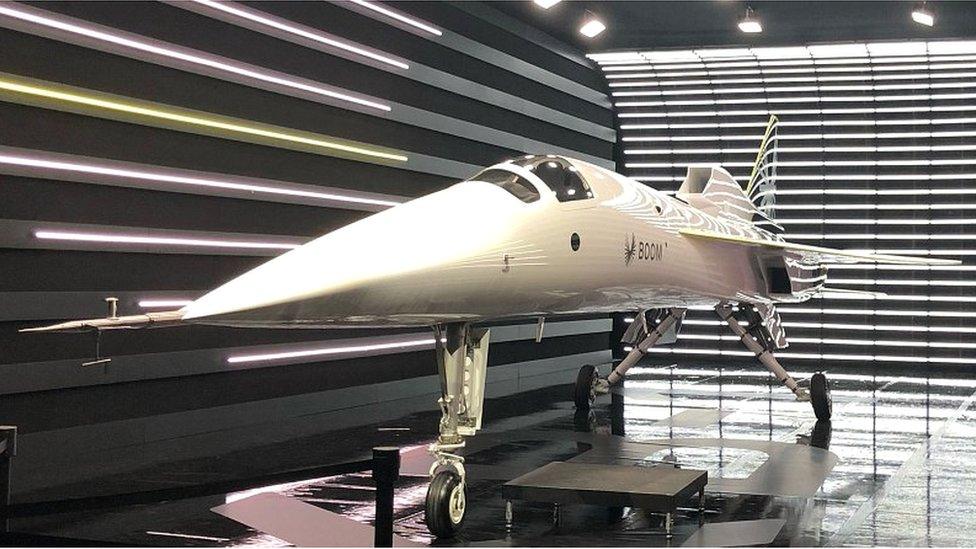
Boom's XB-1 demonstrator will test technology for its planned Overture supersonic commercial airliner
"People have always wanted to travel fast, ever since the first person galloped across the plains on horseback," says Mike Bannister.
And he should know. Mr Bannister flew Concorde with British Airways for 22 years. As the airline's senior Concorde captain he piloted the final commercial flight over London in October 2003 and subsequently the very last flight delivering a Concorde to a Bristol museum.
Nearly two decades later the world is edging closer to again having passenger jets that can fly faster than the speed of sound.
This month, Boom Supersonic rolled out its XB-1 supersonic test plane. It's the first civilian supersonic aircraft since the Soviet Union's Tupolev TU-144 in 1968.
The skinny, sharply-pointed machine will allow Boom to confirm aspects of the design of its proposed Overture, a much more elegant delta-winged project that echoes Concorde.
Overture is intended to carry between 65 and 88 passengers across oceanic routes, sparing human populations the supersonic boom generated by its Mach 2.2 speed.
Nasa has a more outlandish test aircraft in the wings, the spindly X-59. This will fly in 2022, chasing the prize of sustained supersonic flight overland. This means finding ways to eliminate, or at least mitigate, the supersonic boom.
Then there's Aerion, claiming its AS2 design will offer civil supersonic flight by the end of the decade. But with just 8-10 passengers the AS2 is aimed at an entirely new market, that for supersonic business travel.
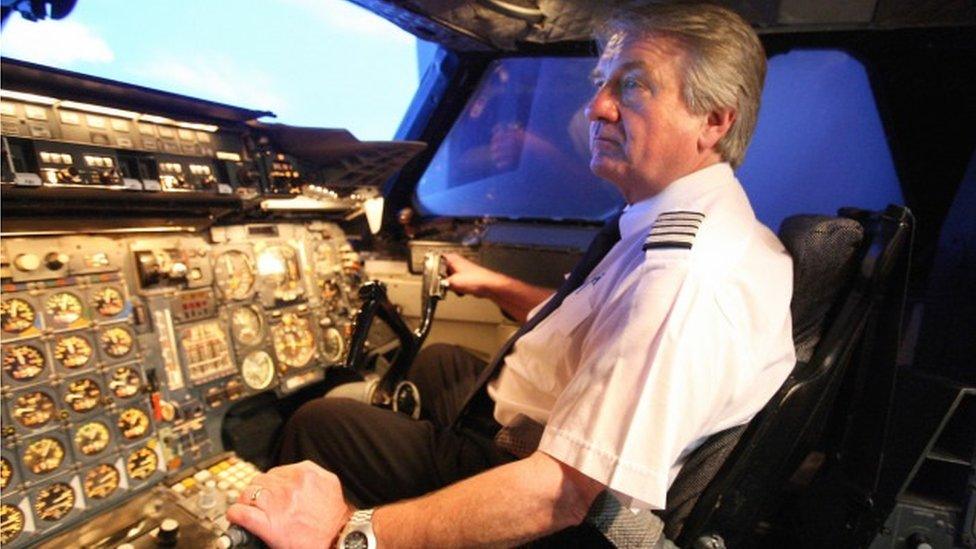
Mike Bannister flew the final Concorde flight for British Airways
Mr Bannister says it's important to understand that these jets are not rivals, but new entrants in completely different sectors of commercial flight.
"With AS2, Aerion are hoping to fly overland at Mach 1.4, generating a low supersonic boom. Boom wants to go over the ocean at Mach 2.2 and in my opinion that's the stronger market," he says.
One engineering problem that all of these aircraft have to overcome is how air is ingested by the engines at high speed.
Gulping in air at supersonic speeds creates problems for all aircraft engines. The intakes are devised so as to break up that airflow and reduce it to a velocity the engine can cope with.
It's a highly sensitive area, which even caused an Anglo-French rift at the time of Concorde's retirement. Air France retired its fleet, but British Airways was keen to keep the aircraft flying.
"One reason Airbus, which had assumed authority over Concorde's design, wouldn't give us the full design authority to keep it flying was because the intake design was still secret," says Mr Bannister.
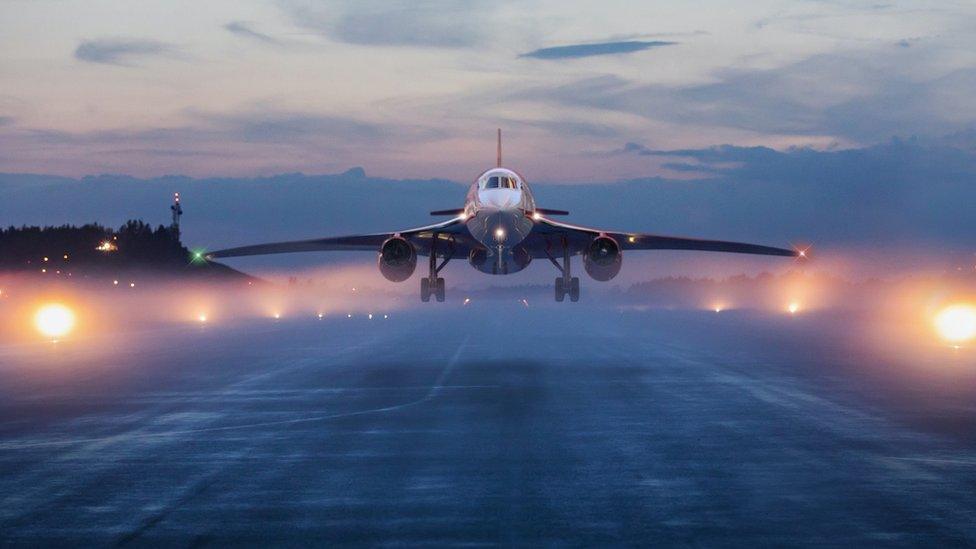
The AS2 is aimed at the business travel market
The aerospace industry is in a vicious downturn at the moment, caused by the Covid-19 pandemic. Airlines have delayed or cancelled orders in response to a slump in passenger numbers.
So will there be demand for supersonic jets?
"The big question is how aviation will pan out post-Covid. There is a theory that business travel will not return to its previous level. But for very wealthy people status matters," says Mr Bannister.
He thinks that the prestige of supersonic flight could steal these passengers away from sub-sonic business jets.
Aerion's AS2 is being built in Florida near Cape Canaveral on what locals call the Space Coast. The company is betting that a triple-engined business jet, which will catapult a handful of people across the world at 1,000mph, is just what business travellers are waiting for.
It aims to have the jet flying by 2027.


Companies that operate fleets of business jets offer a selection of designs and Aerion sees the AS2 as a valuable addition to that choice. The aim is to sell 300 aircraft over 10 years.
Aerion gained credibility when aerospace giant Boeing chipped in with a minority holding in the company, taking two seats on the Aerion board. Likewise Boom boasts former executives from defence contractor Lockheed Martin on its advisory board.
"It's not a question of if, it's a question of when," says Chad Anderson, the president of Jetcraft, which buys, sells and advises on private jets. "The most valuable commodity any of us have is time." He says that routes such as London to New York or Dubai are natural fits for this technology.
But despite Boom's stated intention to fly supersonic over the sea and Aerion's belief that Mach 1.4 flights can be tolerated overland, US regulators have yet to lift a ban on civil supersonic travel.
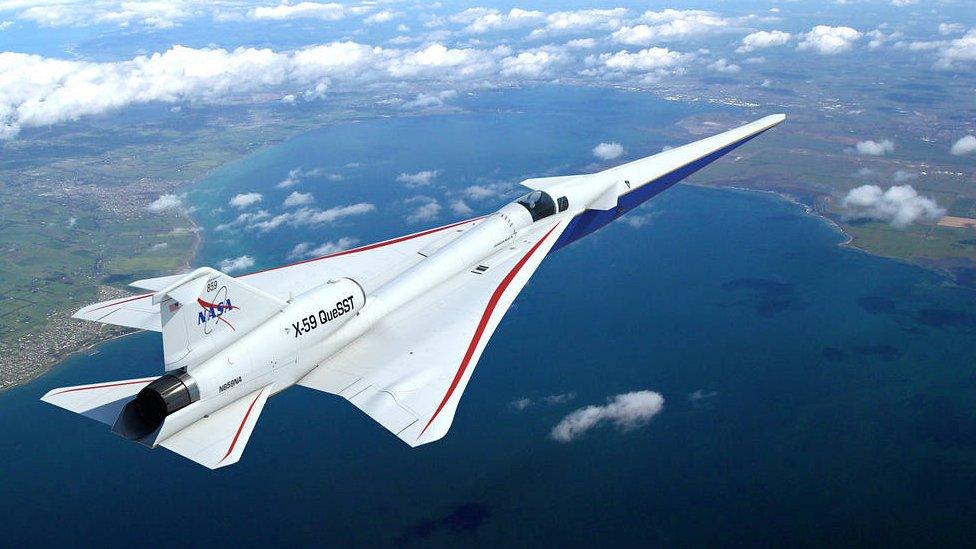
Nasa's X-59 hopes to solve the problem of the sonic boom
So there's a whole world of political lobbying to be got through and Nasa's X-59 will play a big part in this.
Importantly, the participation of big names such as engine-maker GE and Boeing has turned the tide after previous years of speculative supersonic designs. "These are real, capable players," says Mr Anderson.
Nasa feels that the sonic boom is still the biggest challenge in getting supersonic passenger flights up and running again. Although it overlaps with the XB-1, Nasa's own bizarre entrant into the supersonic research stakes, the X-59, is a very different beast.
A long pencil of a craft sporting delta wings sandwiched between foreplanes (known as canards) and tail surfaces plus a pilot's cockpit buried far back along the nose , the X-59 is a shot at developing technology that will see more passengers go supersonic in future.
With a limit of Mach 1.4 the X-59 will search for a place in its flight profile where the sonic boom hardly hits the ground at all. This is all about the N-wave, named after the N shape of the pressure signature that we experience as a sonic boom descending from on high. The X-59 seeks to allow regulators to define a tolerable boom.
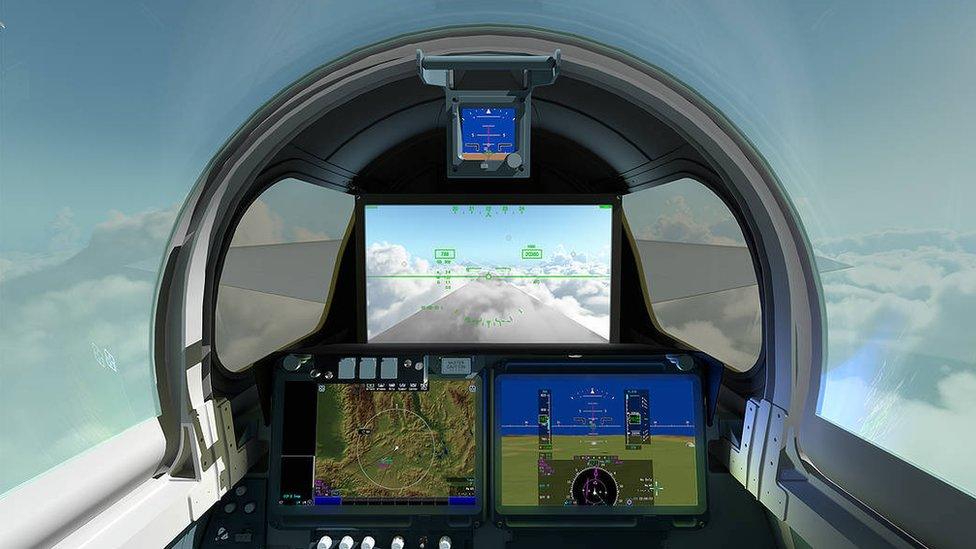
The long nose makes it difficult to pilot the X-59
Due to fly in 2022 its shape should mean sonic shocks ripple along the elongated fuselage, thus minimising their impact at ground level.
Come 2024 this unique shape will be sliding through the sound barrier across selected areas of the US while the population below are canvassed on their reaction to the noise it creates.
High-definition cameras are part of the package because the pilot needs to see right through the endless nose blocking vision ahead. It's a nod to Concorde, which used the famous droop-snoot nose, a visor lowered for visibility during take-off and landing but raised during flight.
This engineering hat-tip should satisfy Mr Bannister. And the eccentric appearance of both the X-59 and the XB-1 leaves Concorde the winner in terms of looks. Its beauty created affection lasting to this day. "Concorde pleased both sides of the brain, artistic and scientific," the veteran Concorde pilot concludes.